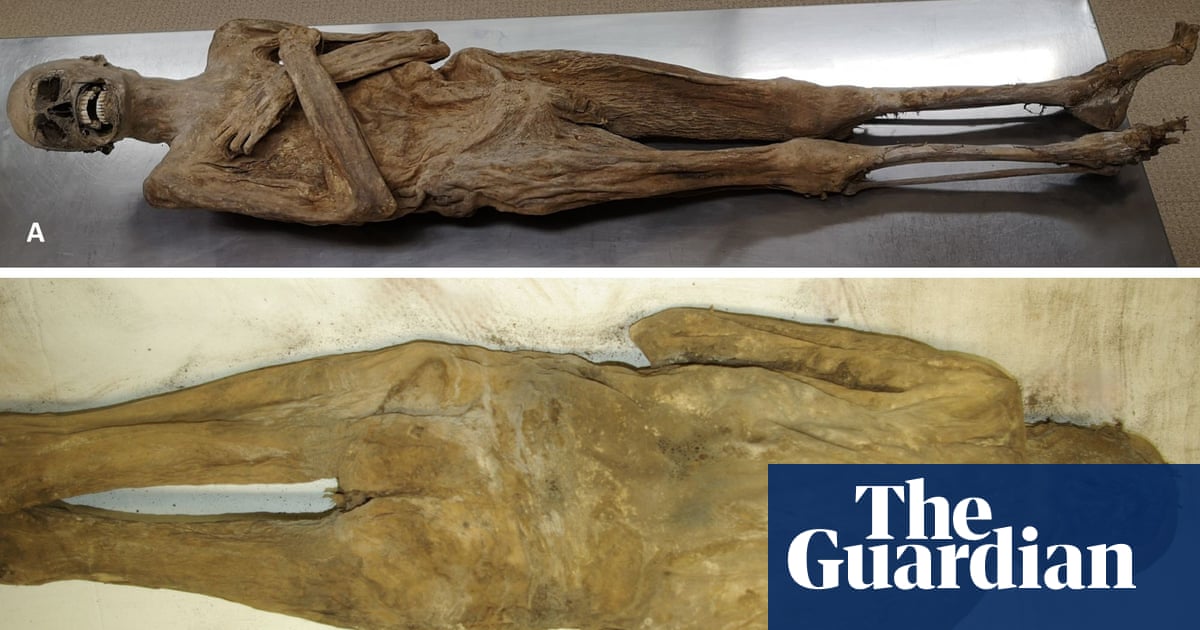Uncovering the Secrets of an Unusual Mummy in Austria
Researchers uncover unique embalming methods in a well-preserved mummy believed to be that of an 18th-century vicar in Austria.
Overview
A research team has confirmed that the well-preserved remains of Franz Xaver Sidler von Rosenegg, an 18th-century vicar, were embalmed using an unusual rectal stuffing method. This involved utilizing wood chips, fabrics, and zinc chloride to absorb bodily fluids, resulting in the preservation of the corpse. CT scans revealed a small glass bead previously suspected to indicate poisoning. The study contributes valuable insights into historical mummification practices, suggesting this method could have served for temporary preservation or transport. Further analysis is ongoing to evaluate the implications of this discovery on our understanding of historical embalming techniques.
Report issue

Read both sides in 5 minutes each day
Analysis
Analysis unavailable for this viewpoint.
Articles (3)
Center (0)
No articles found in the Center category
FAQ
The embalming involved stuffing the abdominal and pelvic cavity with fir and spruce chips, twigs, and fabrics (linen, hemp, flax, silk, and embroidered linen) through the rectum, along with zinc chloride for drying[1][3][4].
Radiocarbon dating, CT scans, and analysis of diet, lifestyle, and health markers matched historical records, confirming he died between 1734–1780 and was the local vicar[1][2][4].
A 2000 X-ray mistakenly suggested the glass bead was a poison capsule, but recent analysis revealed it likely entered accidentally during embalming[1][3].
The materials used (local wood, common fabrics) suggest a cost-effective, accessible method, potentially for temporary preservation or transport, as zinc chloride absorbed fluids efficiently[1][4].
It reveals a previously undocumented method combining organic absorption and chemical drying, highlighting regional adaptations in post-medieval Europe[3][4].
History
- This story does not have any previous versions.


